The question that remains is if a natural plant caregiver can be achieved by using scented Epsom salt. Magnesium sulfate, also known as Epsom salt, has received much praise for its ability to improve the growth of plants by providing them with necessary nutrients. By adding other fragrances into it, its effectiveness and usefulness may be affected. In this paper, we will examine the content of scented Epsom salts and their potential impacts on different species of plants and give out prudent advice based on evidence. The significance of employing scented Epsom salts in horticultural activities will thus, become clear to all readers after reading this whole article.
Understanding Scented Epsom Salt
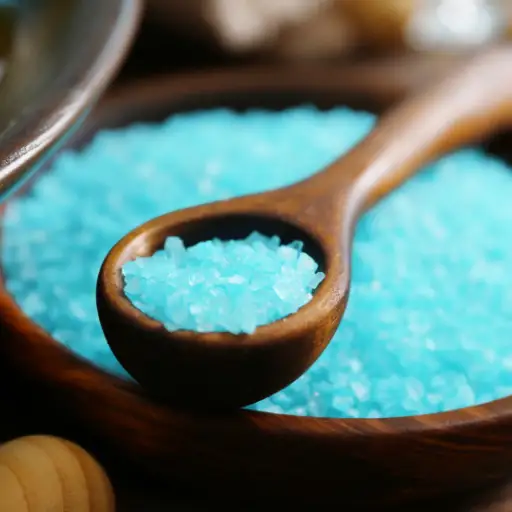
Scented Epsom salt comprises other compounds, which may include essential oils or artificial fragrances. These can have wide variations in their chemical composition and characteristics. Although the normal Epsom salt (magnesium sulfate) adds magnesium to plants as a nutrient for chlorophyll formation and general plant health, inclusion of scents introduces some variables that may not be good for plants. Some certain essential oils and synthetic perfumes could be phytotoxic, implying they might damage plant tissues or hinder nutrient absorption or disturb soil microbiota. Thus, using scented Epsom salts on plants is usually not advisable unless one knows about specific scent additives and how they interact with different plant species. For optimal plant health, it is better to use unscented Epsom salt.
The Composition of Scented Epsom Salt
Magnesium sulfate remains the main constituent of scented types (MgSO₄·7H₂O), providing the necessary magnesium and sulfur nutrients required for plant growth. On the other hand, scented varieties have more than this compound such as essential oils or synthetic fragrances that change its overall composition greatly. Lavender, eucalyptus or peppermint belong to complex organic compounds like terpenes and phenols present in essential oils that could exhibit some phytotoxicity at various levels. Synthetic fragrances also contain a variety of chemicals including aldehydes, esters among others that can disrupt plant biochemistry.
- Concentration of Essential Oils: Concentrations beyond these limits (>0.1% – <3%) may cause phytotoxic effects.
- pH Levels: Essential oils & perfumes sometimes alter pH value of soil solution; most crops thrive within 5.5-7 range away from which nutritional uptake suffers.
- Volatile Organic Compounds (VOCs): The presence of terpenes such as limonene and pinene that may volatize to affect not only the treated plants, but also surrounding flora.
Differences Between Scented and Unscented Epsom Salt
- Chemical Additives: An unscented variety of Epsom salt is pure magnesium sulfate, without other ingredients therefore it is widely applicable in many fields including agriculture. Conversely, scented Epsom salts contain essential oils or synthetic fragrances that can be composed of a lot of chemical compounds like terpenes, phenols, aldehydes and esters. These additives can adversely impact plant growth and soil chemistry.
- Phytotoxicity Potential:
- Essential Oils Concentration: Typical levels are 0.1-3% for essential oils in scented Epsom salts. Amounts exceeding this limit can be phytotoxic causing harm to plants.
- Volatile Organic Compounds (VOCs): In scented Epsom salts, the essential oils usually consist of VOCs such as limonene and pinene, which can evaporate into the atmosphere, polluting neighbouring vegetation and affecting treated plants.
- Impact on pH Levels: Essential oils and synthetic fragrances alter pH levels in soilsolutions. On the other hand unchanged Epsom salt maintains near neutral effect on soil pH thus falling within 5.5 to 7 range which is ideal for most plant species. The presence of these chemicals in scented varieties changes vital minerals’ absorption rate, hence making plants unstressed about their well-being.
- Usability and Application:
- Agricultural Use: The unscented type is used for agricultural purposes because it has an innocent composition with known effects on plant health.
- Household and Cosmetic Applications: For household use, scenting of Epsom salts are usually more suitable, especially in bath and beauty products where they should have fragrance.
Common Additives in Scented Epsom Salt
- Fragrances: Pleasant smell may be achieved using both natural and synthetic fragrances. Natural ones can come from essential oils like lavender, eucalyptus and peppermint while alternatives could be a range of laboratory synthesized compounds.
- Colorants: These are added to improve the visual appeal of the product. They include approved food grade dyes or cosmetic pigments depending on regulatory standards set by bodies such as Food and Drug Administration (FDA) in terms of safety aspects.
- Stabilizers and Preservatives: These keep the scented Epsom salts fresh for a long time. Common examples include citric acid that helps to maintain pH levels balanced; thus, inhibiting growth of microorganisms including bacteria
Potential Risks to Plants
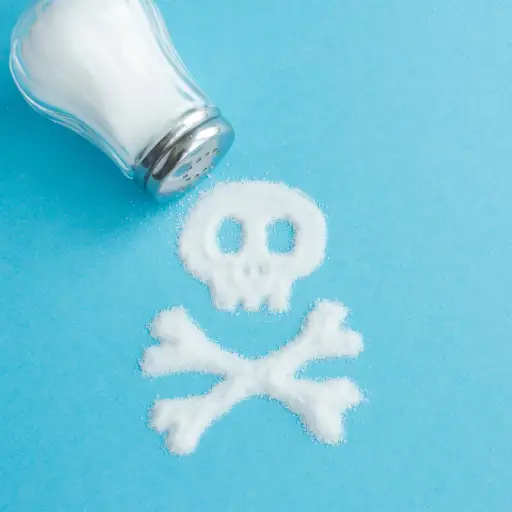
Scented Epsom salts may harm plants in several ways. Adding fragrances and colorants might introduce chemicals that unbalance the soil, making it difficult for plants to grow well. These additions can lead to the collection of poisonous substances which when in accumulation strain nutrient absorption and prevent microbial activity ultimately affecting soil fertility. However, stabilizers and preservatives used to extend the lifespan of a product can interfere with soil pH causing plant toxicity. It is therefore important to use unscented Epsom salts for agriculture purposes to avoid these adverse effects.
Chemical Additives and Plant Health
Chemical additives in scented Epsom salts have various implications on plant health. For example, natural or synthetic fragrances may contain VOCs (volatile organic compounds) other than just eucalyptol which disrupts the soil microbiome. Notably, essential oils such as eucalyptus are toxic if their concentrations reach certain levels where they destroy various kinds of soi microflora. Phthalates or parabens are the main components of artificial perfumes that leak into ground and inhibit root formation, impairing crop nutrition absorption.
Colorants including non-food grade cosmetic pigments often contain heavy metals like lead, chromium and cadmium. With time, these metallic elements accumulate in soils hence phytotoxicity occurs which affects photosynthesis as well as respiration in plants negatively. Consequently, preservatives like sodium benzoate and potassium sorbate alter soil pH levels making them either too alkaline or acidic thereby rendering them inappropriate media for optimum growth of plants.
To ensure that these substances remain within safe limits, one needs adherence to technical parameters. Different inhibitors for volatile organic compounds (VOCs) and essential oil constituents typically range from 0.1-10 parts per million (ppm) depending on individual species examined at any given time. When cadmium in soil exceeds 0.02 ppm, it becomes a problem for instance while lead should be kept below 40 ppm as set by environmental regulatory agencies. In most plants, soil pH need to be maintained around 6.0-7.5 in order to keep nutrient availability and microbial health at best.
To sum up, use of scented Epsom salts containing such chemical additives may cause detrimental effects on plant health hence careful consideration regarding their chemical composition and concentration is necessary for safe agricultural practices.
Effects on Soil Microbiology
The constituents of scented Epsom salts significantly influence soil microbiology. The intrusion of phthalates and parabens in soils disrupts the complex interplay between soil microbial communities by inhibiting critical bacterial and fungal organisms’ growth and function. These microorganisms are involved in important processes like nutrient cycling, organic matter decomposition as well as maintenance of soil structure. Moreover, heavy metals that can be phytotoxic may decrease the beneficial microbial populations. When above threshold limits e.g., 40 ppm lead or 0.02 ppm cadmium are reached, there is a microbial stress caused by heavy metals that leads to metabolic dysfunction with decreased activity of microbes.
Moreover, some preservatives in fragrant Epsom salts such as sodium benzoate or potassium sorbate induce changes in diversity of soil microbes too. As these compounds shift the pH out of the range recommended for most crops (6-7), they create conditions allowing acidophilic or alkalophilic microorganisms thrive while inhibiting others; such pH imbalances consequently cause competitive exclusion thereby leading to reduced number of different kinds of bacteria and fungi within soils.
The antimicrobial and phytotoxic properties of volatile organic compounds (VOCs) and essential oils can be exhibited at concentrations ranging from 0.1 to 10 ppm; both their impacts are compound-specific, that is they depend on the sensitivity of microbial species present. Therefore, it is important to check these chemicals and maintain them within safe concentration limits to ensure that a healthy soil microbiome remains functional.
Essential Oils and Fragrances Hazards
While they are famous for pleasant smells and healing abilities, essential oils and fragrances are dangerous when introduced into soil ecosystems. Firstly, they are hydrophobic in nature leading to their bioaccumulation in soils matrices which affect nutrient bioavailability as well as soil structure change. Also, some types of essential oils are potent antimicrobials that act disproportionately towards the microbial population in soils. Eugenol or thymol for example destroys bacterial membranes causing cell lysis thereby decreasing microbial activity. On this note, nitrogen-fixing bacteria growth inhibition together with mycorrhizal fungi which plays a very vital role in plant’s nutrient absorption as well as viruses such as rhizobium may arise from this action of reducing the overall fertility of the soil. Additionally, synthetic fragrances contain phthalates together with parabens thereby polluting ground waters by leaching them down since most of them are responsible for endocrine disruptions which make them environmental hazards on a large scale related to health issues. In conclusion therefore it is necessary for soil concentrations so that long term ecological damage is avoided whereas maintaining its healthiness by being intact.
Safe Alternatives for Plant Care

Composting and using organic mulches is one other option for plant care that can be effective. Besides improving soil structure and moisture retention, these materials also enhance microbial activity as well as nutrient availability. Another way of practicing safe pest control is by adopting biological means that involve using predators or beneficial insects to manage pests hence reducing the application of chemicals. Moreover, incorporating cover crops into garden practices can deliver multiple benefits like suppression of weeds, control of erosion, and enhanced fertility of soils. Generally speaking, these methods together provide sustainable management for plants with minimum environmental damage.
Using Pure Epsom Salt
Pure Epsom salt has high levels of magnesium and sulfur, making it ideal for plant care. Magnesium is an important element in chlorophyll which carries out photosynthesis within plants while at the same time playing a role in energy transfer, enzyme activation as well as stabilizing nucleic acids structure. On the contrary, Sulfur helps in synthesizing essential amino acids such as methionine and cysteine. It also plays a role in vitamins formation and enzymes synthesis.
When used correctly, Epsom salt can correct magnesium deficiencies indicated by leaves turning yellow between their veins (interveinal chlorosis) or when they stop growing healthily. It can be applied at a rate of around 1 to 2 tablespoons per gallon either through foliar spray or soil drenching method. They are dissolving 1 tablespoon per foot height of indoor plants in water once every month usually works perfectly well.
By following these rules, one will ensure good supply of much needed elements e.g., Mg and S with no nutrient imbalance caused by excesses but only produce healthy results from properly grown gardens’ vegetables and fruits (Juice Plus 2019). Moreover, research studies have shown that Epsom salt does not alter soil pH or its physical structure thereby making it eco-friendly for gardeners to use, if they want to improve the health and productivity of plants.
Make Organic Soil Amendments More Dynamic
Organic soil amendments are natural materials applied to the soil so as to better its physical qualities, furnish nutrients, and increase overall fertility of soil. Some common examples of organic soil amendments include compost, manure, peat moss, green manure among others. Compost is a product of aerobic decomposition of organic components like kitchen wastes and yard clippings. This way it increases the organic matter in the soil, retains more moisture as well as introducing helpful bacteria into the soil. In terms of fertility and structure enhancement manure offers high levels of nitrogen and other important minerals but should be well mixed with compost in order to avoid introduction of pathogens or increasing salt levels.
Peat moss is partially decomposed sphagnum moss that has both good water holding capacity and improves air penetration into soils thereby ensuring enough drainage. It greatly helps in sandy or clay soils which are not easily permeable to plant roots. Green manuring refers to growing certain crops and then mulching them after cutting them down on the field boosting level of organic matter/nitrogen as well improving texture and suppressing weeds within it.
These referred organic soil amendments can result in healthier plants leading to increased yields thus sustainable agriculture practices including minimizing environmental degradation. Gardeners must choose from these types depending on their specific gardening objectives and conditions prevailing on sites concerning each amendment type.
Natural Fertilizers Need Rewriting
Natural fertilizers are made from organics that enhance soil fertility and promote fast growth rates in plants. They differ from synthetic fertilizers by being slow release sources for essential nutrients besides offering benefits for health improvement over time. Examples include bone meal, blood meal, fish emulsion, seaweed extract among many others.
Bone meal contains phosphorus and calcium which are very vital for root development hence flowering is also enhanced by it. Blood meal contains large amounts of nitrogen responsible for leafy growth however one must be careful with its usage to avoid burning the crop. Fish emulsion is a balanced fertilizer that contains numerous nutrients and it is also mild for plants hence used in various gardening applications. On the other hand, seaweed extract has trace minerals, plant growth hormones, and amino acids which are fundamental in improving general plant health plus resistance towards stress.
In addition to providing essential elements, these natural fertilizers also support beneficial soil microorganisms and increase soil organic matter, hence making plants more resilient and productive. It is important to consider the specific nutrient requirements of your plants and soil conditions when selecting a natural fertilizer for optimal growth and productivity.
Situations to Avoid Scented Epsom Salt
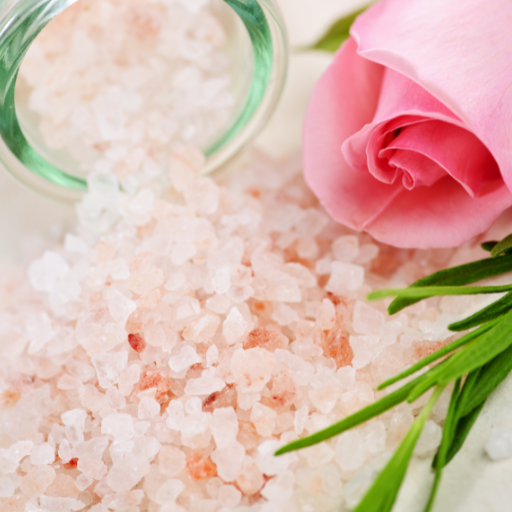
It is good to know that you should never use scented Epsom salt in certain situations. For instance, fragrance chemicals are often added to make such products smell nice can cause skin irritation or worsen an existing condition if it is sensitized dermatitis or other allergies. In addition, the artificial additives and scents found in scented Epsom salts render them inappropriate when used for gardening purposes since they may harm plants and soil microorganisms that are key players in maintaining soil health. Also, open wounds or cuts can be annoyed by the fragrance chemicals contained in the scented Epsom salts. Choose only unscented and pure Epsom salt meant for therapeutic or horticultural needs so as not to have this problem.
Species with Sensitive Plants
When handling sensitive plant species one must be mindful of what types of fertilizers and soil amendments to employ because some of these plants have more sensitive reactions toward different chemicals and additives applied on them than others do.Typically, these include orchids, ferns, cacti among other succulents.These plants suffer nutrient burn from harsh synthetic fertilizers; their roots get damaged after exposure to harsh chemicals; while they undergo pH imbalances due to severe scientific manure.Therefore gardens caring for these delicate plants may need mild organic fish emulsion or seaweed extract fertilizers free from synthetic fragrances and dyes like any other chemical substance always targeted at these kinds of very delicate crops. Always customize your care routine to suit the unique requirements of these delicate species thereby achieving a healthy and flourishing garden.
Immature Seeds And Seedlings
They require a nurturing environment for their healthy growth and development when newly planted. A good quality sterile seed starting mix with high porosity, low water holding capacity which will help ensure against damping-off diseases caused by soil pathogens is necessary when sowing seeds. It is also important not overwater or underwater your seedlings as either too much or too little moisture inhibits root growth and therefore weakens the entire seedling. Additionally, new plants need adequate lighting either from natural sunlights or grow lights to provide enough energy for their healthy growth. Furthermore, temperature control is important; many seeds germinate best at warm temperatures ranging between 65-75°F (18-24°C). Once they have grown true leaves, they should be hardened off before being transplanted in to garden beds by exposing them to more sunlight and varying temperature for a few days.
Fertilizers and Pesticides of High Concentration
For any application involving highly concentrated fertilizers and pesticides, extreme care must be taken in order to prevent any possible negative implications on both plants as well as the ecosystems around them. Following that reason, whenever you use concentrated formulas, it is important to respect the manufacturer’s instructions which include dilution ratios and application rates. Overdoing this could lead nutrient burn up soil toxicity contamination of groundwater and other harm can occur from such high dosages. Integrated pest management involves combining biological controls with mechanical interventions to minimize chemical use.Protective gear are used during preparation and applications to enhance personal safety.Soil test also assist in checking nutrient levels thus discouraging excessive use of high concentration compounds while advocating sustainable gardening approaches.
How to Test Epsom Salt Safety
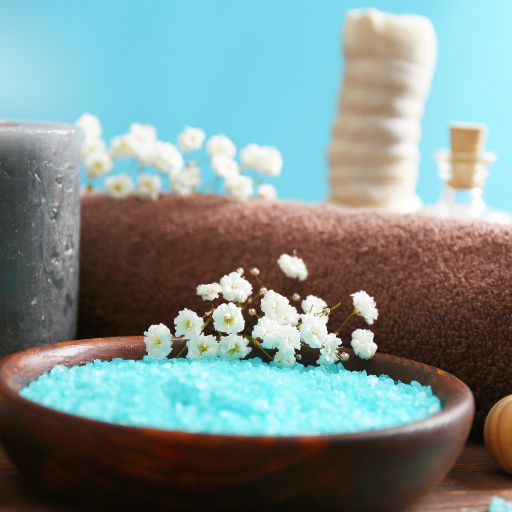
For safety and effectiveness of Epsom salt (magnesium sulfate) usage in your garden ,it will be necessary to undertake a simple soil test to determine the magnesium levels. To start, collect soil samples from different parts of your garden and combine them. Take this mixture to a professional soil testing laboratory that will provide detailed nutrient level analysis including that of magnesium; or use a home kit for soil tests measuring pH and essential nutrients. When applying Epsom salt, follow the recommended dosage and method based on your soil test results. It is important not to use too much since it may lead to too much magnesium imbalance in the soil, thus negatively affecting plant growth. Regularly monitoring and testing the soil can help maintain optimal conditions for healthy plants.
Patch Testing
Choose a small area that is not easily noticeable within your garden where you can perform patch test using Epsom salt. Dilute the Epsom salt with water following the recommended dosage indicated by results of your soil test. Put this solution over selected area of trial gardens and observe plants over several days or weeks next after application period elapses. Look out for any signs of stress such as stunted growth or yellowing leaves indicating an excess magnesium level in the plant tissue. If there are no negative effects on these plans then it could be safe to apply more widely across your backyard. Monitor continuously as well as take regular tests on soils so as to balance nutrient levels.
Plant Response Monitoring
Important technical aspects have been highlighted which should be considered when observing plant response to Epsom Salt treatment . Begin by noting down any changes in height, leaf size and number of new shoots occurring among plants growing within trial plots at different rates . Instead employ calipers or ruler for accurate measurements while recording such data points at set intervals say like after every 7 days . Additionally, consider leaf coloration for possible evidence of correcting magnesium deficiencies like greening up yellowing foliage.
Another significant parameter is soil pH since it can be altered by Epsom salt. Check for any changes in soil acidity or alkalinity using a pH meter or test strips. The suitable pH range for the majority of garden plants falls between 6.0 and 7.0; when these figures vary too much, corrective measures may be necessary. Moreover, levels of moisture held in soil must also be checked, as magnesium sulfate affects water retention abilities within the soil. A soil moisture sensor will help to maintain desirable water content.
Finally, root development serves as an indicator of general plant health and vigor. Dig carefully around test plants to observe root systems visually for their robustness and density . These observations will help you determine if Epsom salt promotes healthy growth.
In sum, growth rate, leaf coloration, soil pH, soil moisture levels, and root development are crucial parameters that validate the application of Epsom Salt in a gardening context. Regularly tracking these factors would ensure balanced nutrient levels and optimum plant health.
Adjustments Based on Results
Therefore, it is important to modify the use of Epsom salt based on monitored parameters so that maximum plant health is maintained.. If there are stagnation or decline in growth rate measurements then think about increasing how often you apply Epsom salt or increasing its concentration but staying within recommended rates. For example according to one rule dissolve one tablespoonfuls Epsom salts into a gallon of water and apply this solution twice per month?.
If the leaf is still yellow even after applying Epsom salt, magnesium deficiency continues to prevail. In such cases, increase the dose slightly or ensure an even application throughout the soil. Always keep within acceptable limits to avoid over fertilization.
Soil pH monitoring is very important; if the application of Epsom salt causes drastic change in soil pH beyond the ideal range of 6.0 to 7.0, correct this by adding lime to raise pH or sulfur to lower it.
Similarly, decisions should be made based on results from soil moisture levels. If Epsom salts’ hygroscopicity leads to low soil moisture levels, it may be necessary to increase frequency of irrigation or put mulch around plants for water retention purposes.
Finally, strong root development as seen through digging should lead to thick healthy roots systems. Scanty roots may call for slight increments in Epsom salt use while too much root growth indicates reduced rates of application.
Through following these technical guidelines derived from reliable sources, we can effectively customize the use of Epsom salt towards a balanced nutrient management and ensuring continued plant vigor.
Best Practices for Using Epsom Salt in Gardening
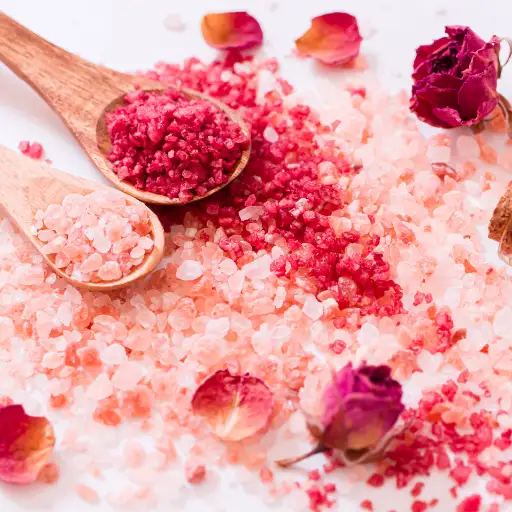
Adopting a regimen for Epsom salt that is plant specific and considers soil conditions will greatly help in gardening. Soil testing enables one to gauge the exact amounts of Epsom salt necessary to correct identified nutrient deficiencies. In general, dissolve Epsom salt in water and use it as foliar sprays or soil drenches at the rate of 1 tablespoon per gallon. This ensures uniform distribution across the field thus avoiding localized over-fertilization. Roses, tomatoes and peppers are some particular plants that gain much from Epsom salts; apply around their base once a month during growing season. Always observe plant responses and respond by changing the frequency or amount dosages if need be to maintain proper growth conditions.
Right dosage and application methods
- Rates of Application: According to leading agrarian extensions, typical rates are approximately 1 tablespoon of Epsom salt dissolved in one gallon of water. This mixture can serve as a foliar spray or a soil drench. Apply foliar sprays on both sides of leaves, ensuring that they are completely covered; early morning hours and late afternoon are ideal since evaporation is low while absorption is high during these periods. For soil drenches, apply close to the root zone so that nutrients can reach all parts uniformly.
- Palatal Specificity for High-Needs Plants: Other high needs plants include tomatoes, peppers, roses which may require stronger treatment options. Texas A&M AgriLife Extension advises applying one tablespoon of Epsom Salt per foot of plant height every six weeks during the growing season improving flower blooming and fruit setting through essential magnesium (Mg) and sulfur (S).
- Soil Testing & Adjustments: Purdue University Extension Service centers emphasize annual soil testing to determine existing magnesium levels and make exacting amendments if necessary. Soil with magnesium content below 100 ppm (parts per million) may require inclusion of Epsom salt, while that above 200 ppm implies sufficiency. Balance and likely toxicity are the reasons why doses are adjusted according to soil test outcomes.
Mixing Epsom Salt with Other Nutrients
Combining other nutrients with Epsom salts can increase the nutrient uptake and availability hence optimizing plant health and productivity. Mixing balanced fertilizers with Epsom salts complements the major nutrient applications such as nitrogen, phosphorus, and potassium because it provides them with essential magnesium [Mg] and sulfur [S] used in chlorophyll production and protein synthesis. For example, add one tablespoon of Epsom Salt to every hole when planting along your regular fertilizer schedule to promote stronger roots. Also incorporating organic matter like compost increases soil structure boosting nutrient release slowly but continuously so that there is no deficit at any given time. Moreover, ensuring that the pH of the soil is within optimal range will enhance effective uptake of all additional nutrients including those from using Epsom salts. Monitoring soil nutrient levels periodically accompanied by adjusting these quantities based on plant response prevents deficiencies or toxicities thus tailoring nutritional needs accordingly.
Regular Monitoring And Soil Testing
Being crucial constituents of good garden management, regular monitoring and soil testing are important. At least once in a year is the period within which soil tests should be done ideally in the same season for nutrient levels tracking consistency. There should be an accurate representation of overall condition of soil from various sites within the garden through sampling. Based on the results, nutrient applications can be adjusted to ensure that plants get all required elements for their optimal growth. This only entails not only carrying out soil tests but also looking at plant health together with growth patterns by eyes.
Leaf color changes, growth rates, and general plant robustness can hint at substances lacking or excess inside them. Thus, it is possible to take samples and determine what nutrients have been overused or lacking in them. The use of sustainable systems like composting and crop rotation that release more organic matter into a garden’s soil is highly recommended because they enhance fertility as well as improve its structure.
Through observing this, one will be able to know when exactly those nutrients need to be added on so that the garden keeps on being productive and healthy; combining these observations with periodic soil testing will enable them make sound decisions regarding how much fertilizers should be applied.
Frequently Asked Questions (FAQs)
Q: Can I use scented Epsom Salt on my plants?
A: It is generally not recommended to use scented Epsom Salt on plants, as the added fragrances and oils may do more harm than good. Opt for plain Epsom Salt (MgSO4) to help your plants.
Q: How much Epsom Salt should I use per gallon of water for my home garden?
A: A commonly recommended dosage is 1-2 tablespoons of Epsom Salt per gallon of water. This can benefit plants like tomatoes and peppers in your home garden.
Q: Can Epsom salt benefit my vegetable garden?
A: Yes, adding Epsom Salt can be beneficial for your vegetable garden. It provides magnesium and sulfate, which are crucial for plant growth, especially for plants like tomatoes and peppers.
Q: How often should I add Epsom Salts to my garden bed?
A: Adding Epsom Salts once a month is generally sufficient. However, it’s important to assess the specific needs of your plants every planting season to ensure they benefit from Epsom Salt.
Q: Can I add Epsom Salt to my sprayer for easier application?
A: Yes, you can dissolve Epsom Salt in water and use a sprayer for easier application on your plants. A mixture of 1 tablespoon of Epsom Salt per gallon of water works well for this.
Q: Are there any specific plants that benefit the most from Epsom Salt?
A: Plants like tomatoes and peppers greatly benefit from Epsom Salt due to their higher magnesium requirements. Other plants that may also benefit include roses and houseplants.
Q: Is Epsom Salt also great for your garden lawn?
A: Yes, Epsom Salt can also be beneficial for your garden lawn. It helps to improve the grass’s growth by providing it with essential nutrients.
Q: Is Epsom Salt safe for use in a home garden?
A: Yes, plain Epsom Salt is safe and beneficial for a home garden. It provides essential nutrients like magnesium and sulfate for plant growth. However, ensure it’s free from any added fragrances or chemicals.
Q: What precautions should I take when using Epsom Salt for plants?
A: Ensure you use the recommended dosage (1-2 tablespoons per gallon of water) and avoid over-application, as it could harm your plants. Always use plain Epsom Salt without any added fragrances or chemicals.
Q: Can I use Epsom Salt on my full circle farm specializing in peppers and tomatoes?
A: Yes, Epsom Salt is excellent for a full circle farm specializing in peppers and tomatoes, as these plants benefit from the additional magnesium and sulfate provided by Epsom Salt.






